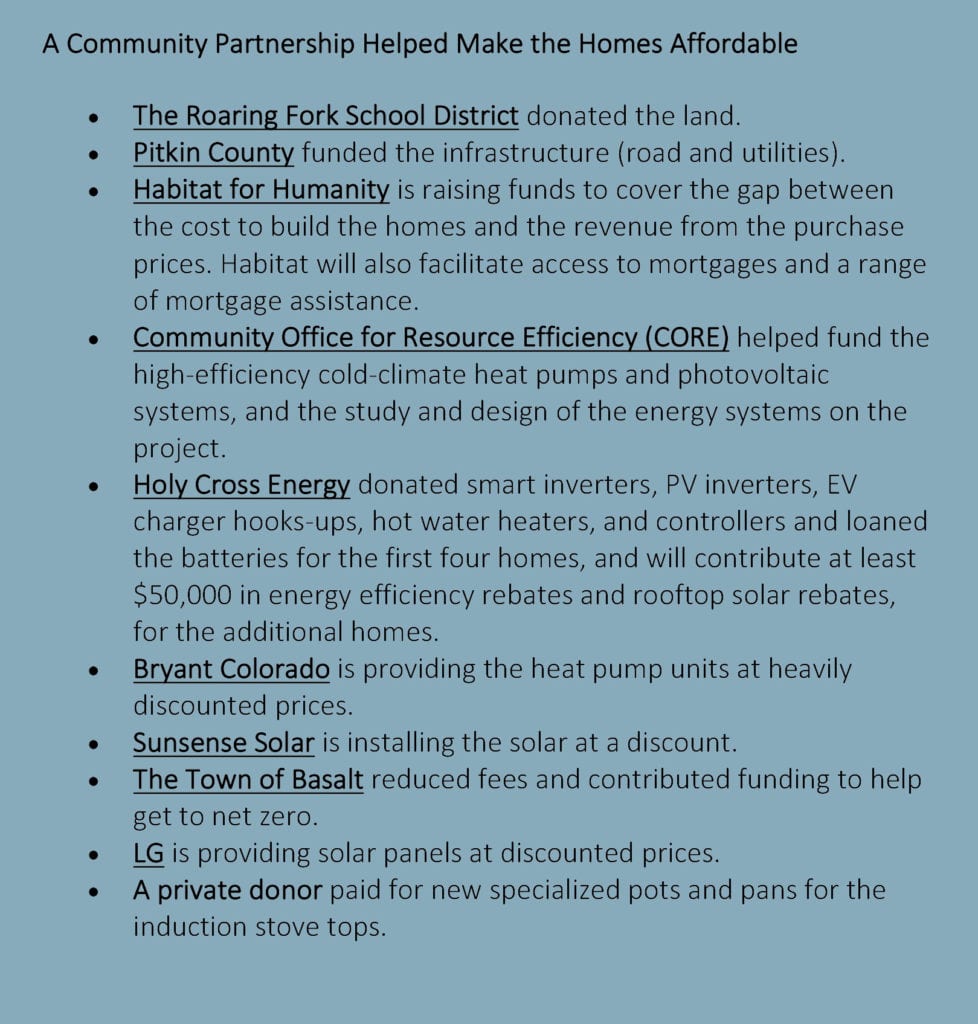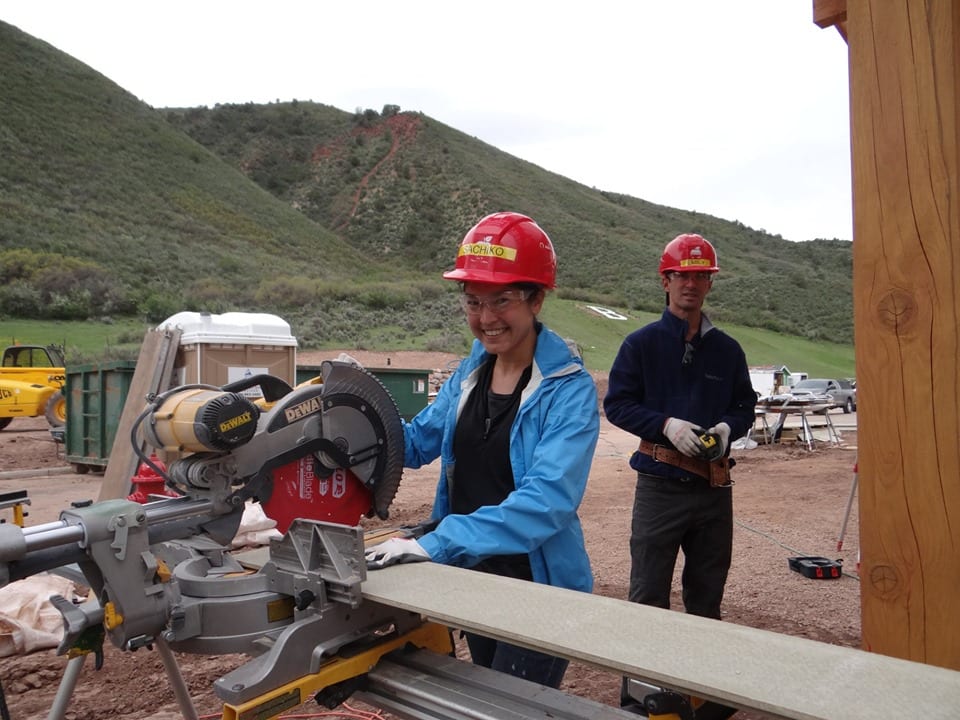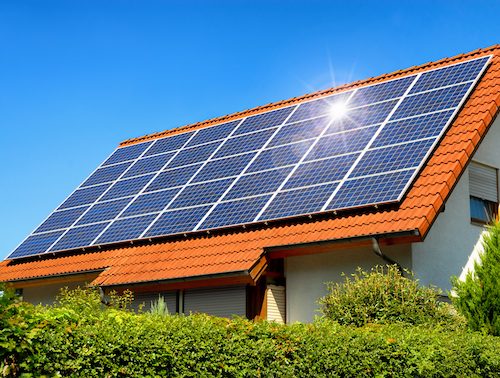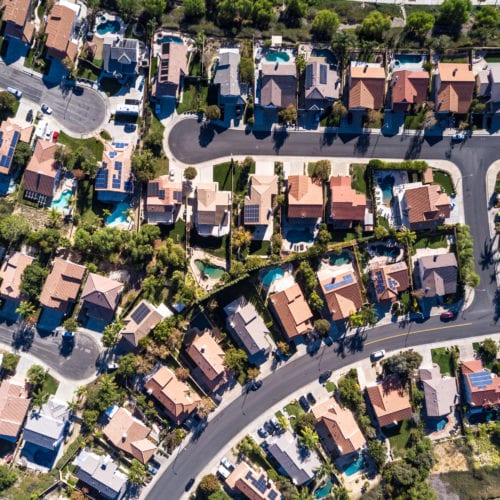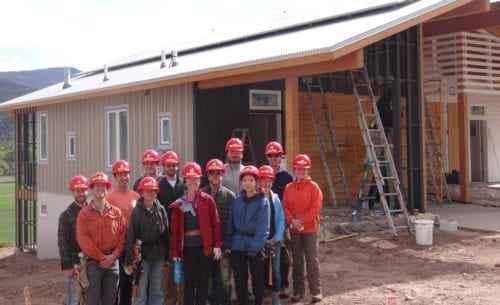
An Affordable, Net-Zero, All-Electric Community in the Colorado Rockies
Last week the Rocky Mountain Institute Basalt office (and two of our Boulder colleagues) had an amazing opportunity. We were able to volunteer to help build houses with Habitat for Humanity. But these weren’t just regular houses. These are in the first affordable, net-zero, and all-electric housing project in Western Colorado. The 27 homes in the Basalt Vista Affordable Housing Community will not only be affordable to buy, thanks to myriad partners that are donating and subsidizing the cost of many elements (see sidebar “A Community Partnership Helped Make the Homes Affordable”), but also affordable to operate because they will generate more energy than they use.
A Community Partnership
When Habitat went to the town of Basalt to get approvals for an affordable housing project, one of the town council members happened to be Auden Schendler, vice president of sustainability for Aspen Skiing Company and a former RMI employee. Schendler requested that they forgo installing a gas line and go all-electric and even make it net zero. That’s when a local nonprofit, the Community Office for Resource Efficiency (CORE), got involved to help with the net-zero energy aspect. “After experiencing the Innovation Center at Rocky Mountain Institute, it became clear to me that we were at a crossroads on energy efficient buildings in this climate,” said CORE Program Director Marty Treadway. “When the Basalt Vista project came to us, it was really CORE’s first opportunity to apply these net-zero energy concepts to an entire neighborhood.”
While the local Habitat chapter has been building efficient homes and installing solar photovoltaics on them for some time, they had never tackled an entirely net-zero housing development. They had already started to put in the fossil fuel infrastructure, and had only 45 days to make a decision about trying to go net zero before they had to decide if they needed to put in a gas line. According to Amy French, volunteer coordinator for Habitat, “Looking at all of the energy performance data and doing a cost analysis, we decided that it was the right thing to do, and that we could then show other affordable building projects that they could move in this direction as well.” And not bringing in gas infrastructure saved them $30,000 plus additional significant costs to bring gas to each individual home.
Why All-Electric?
There are two good reasons for houses to be all-electric: the health of the home’s residents and the health of the planet. The 70 million homes and businesses in the United States that burn natural gas, oil, or propane for heating, cooking, drying clothes, and more generate 560 million tons of carbon dioxide each year. What’s more, the entire gas distribution system leaks methane, which is 80 times more polluting than carbon dioxide over a 20-year period. Overall, the use of these fuels in our buildings is responsible for upward of a billion tons of annual CO2-equivalent emissions—or 15–20 percent of total US emissions.
And gas stoves emit pollutants—like nitrogen dioxide and carbon monoxide—into our homes, leading to asthma and other ailments. “When you are cooking, those invisible pollutants can easily reach levels that would be illegal outdoors,” says RMI Managing Director Bruce Nilles. “But the Clean Air Act does not regulate the air inside our homes.”
Not only is it safer and healthier to go all-electric, but the time is right. New technologies such as heat pumps and induction stoves are extremely efficient. And with the price of renewable energy falling, we can affordably run our appliances on clean energy.
And that’s exactly what Habitat for Humanity is doing in Basalt Vista. The two- to four-bedroom units will each have a solar photovoltaic system on the roof averaging 11 kW. They will be equipped with heat pumps (which use electricity to move heat from a cool space to a warm space, both for hot water and space heating and cooling), induction stoves (which use magnetic waves to heat up pots), electric vehicle charging stations, LED lighting, and EnergyStar-rated appliances.
The residents will all receive training and a homeowner’s manual that will explain how to interact with the unfamiliar appliances and equipment and provide other information that first-time homeowners might need, such as tips on saving money for emergencies. But the manual goes beyond just being a basic guide to the house. According to Bo Blodgett, Habitat programs coordinator and analyst, who is writing the manual, “The manual will have a behavioral aspect as well. We want people to realize that they are part of the net-zero system, instead of just thinking about how the system can work for them—or working against it outright.”
A Live Learning Lab
One of the most exciting aspects of the project is the partnership with the local utility, Holy Cross Energy (HCE), a cooperative utility with more than 46,000 members. HCE is using the housing development as a learning lab, with the aim to show how adjusting energy levels provided by solar photovoltaics and batteries can both save money for customers and benefit the grid. HCE is installing smart controllers and battery banks in four of the homes for a four-month test period (it is hoping to extend it to a 10-month period). These controllers will allow HCE to manage members’ loads or pull energy from the battery or solar system.
There are basically three different modes that the system can operate in. The energy-saving mode will use algorithms based on the customer’s habits. “If you take a shower at the same time each morning, give or take 15 minutes, the water heater shouldn’t have to keeping your water hot at all hours of the day,” said Chris Bilby, a research engineer with Holy Cross Energy.
The customer mode will work to reduce the customer’s bill. Through smart appliances, HCE can reduce the amount of energy customers need to pull from the grid during peak demand when rates are highest. Any adjustments that HCE makes would go unnoticed by homeowners.
And the peak load management mode will actually be able to pull energy into the grid from the batteries or directly from the solar system when the grid needs it and the home doesn’t.
All of the data from the four homes over the test period will be utilized by the National Renewable Energy Laboratory to validate its efficiency models for the units to see if this model can be replicated in communities around the country. “This is a very exciting project for Holy Cross because it will provide the framework for dispatching and controlling distributed energy resources, and it helps Holy Cross understand the benefits of distribution flexibility as a grid service,” said Bilby. “This approach will allow HCE to invest in new renewable energy projects, build a more flexible and resilient distribution grid, and provide new energy products and services to our members.”
Affordable Green Living
Thanks to a lot of community support (see sidebar), the homes will cost less than half the price of an average home in the area. They are slated for teachers and other low-income families. And not only will the families have an affordable mortgage, they will also have little to no utility costs. “Having low utility costs will help families succeed in the long term. In many affordable housing projects, people still have to pay full market value for energy costs and maintenance. A net-zero home sets them up for further success as a homeowner,” says French.
RMI was excited that we got to be a small part of this exciting development, and that our gas-free net-zero energy office building is helping to spur other developments that are tackling climate change and making a difference.
